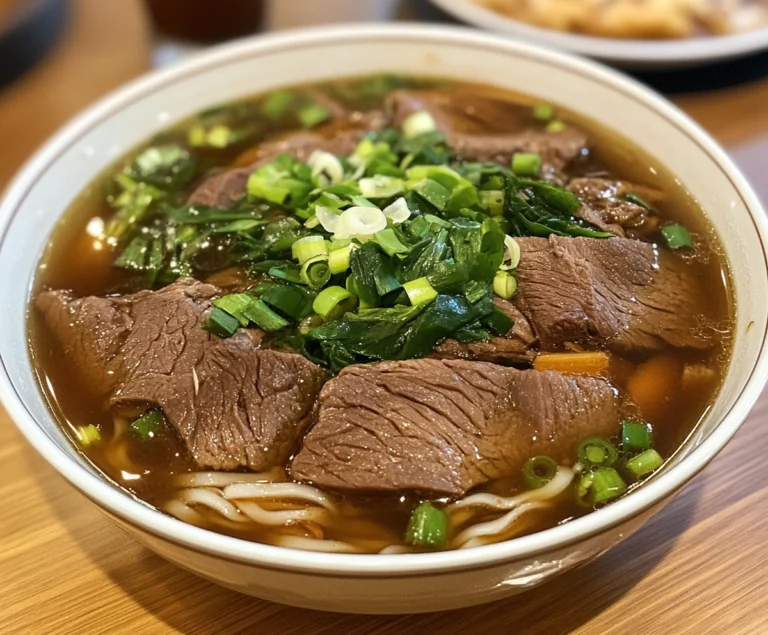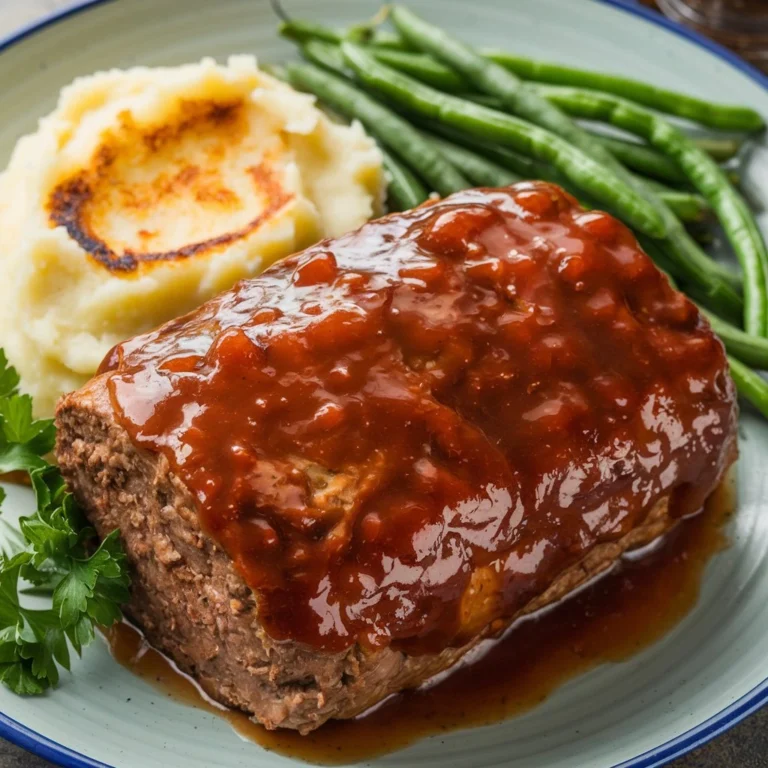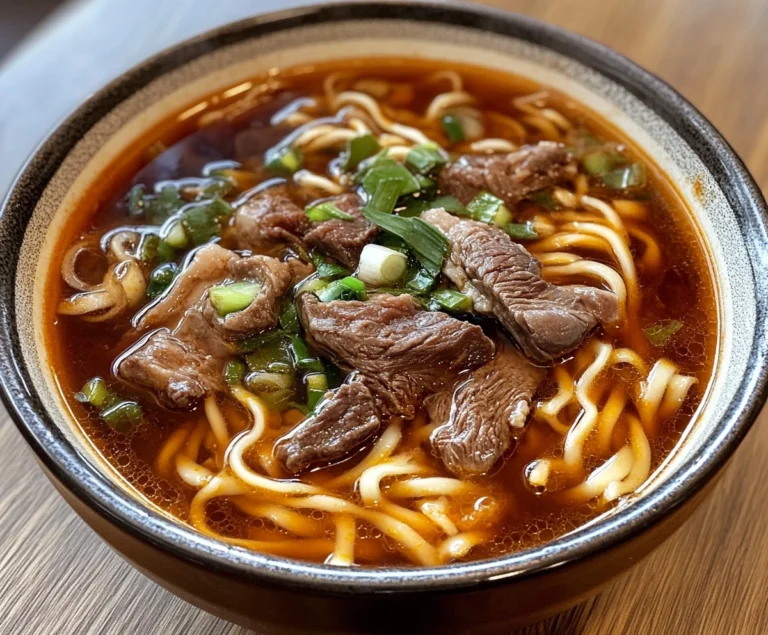What Is the Sauce Made of in Chicken Pot Pie?
Chicken pot pie is an iconic comfort food, enjoyed across many cultures and variations. But what truly makes a chicken pot pie memorable is the creamy sauce that binds all the ingredients together. The sauce provides richness, texture, and flavor, elevating the filling to a new level of satisfaction. Understanding what the sauce is made of, how it’s prepared, and the various ways to customize it allows you to create the ultimate chicken pot pie.
History of Chicken Pot Pie and Its Sauce
Chicken pot pie has deep roots in American cuisine, though similar dishes date back to the ancient Greeks and Romans. The modern version, consisting of a flaky crust and savory filling, took shape in the United States, becoming a staple comfort food. One key factor that sets chicken pot pie apart from other meat pies is the sauce. In traditional meat pies, the filling can be dry or gravy-like. However, chicken pot pie’s signature sauce adds a velvety texture, bringing all the ingredients together in a way that’s both satisfying and rich.
The sauce typically consists of a roux—a blend of butter and flour—combined with a liquid such as chicken broth, milk, or cream. This simple yet effective base has evolved over time, with variations that cater to different dietary needs and flavor preferences.
URL: https://www.butter.com/importance-of-butter-in-cooking
This link provides in-depth information about how butter functions in sauces and dishes.
Common Sauce Ingredients in Chicken Pot Pie
To understand the sauce, let’s break down the most important ingredients:
- Butter: Adds depth and richness. The butter helps create the roux, which thickens the sauce and adds a luxurious texture.
- Flour: The thickening agent. When combined with butter, flour forms the roux, which serves as the foundation of the sauce’s creamy consistency.
- Chicken Broth or Stock: Provides the savory, umami base. Chicken broth is rich in flavor and serves as the main liquid in many versions of the sauce.
- Milk or Cream: Adds smoothness and body to the sauce, enhancing its creaminess. Milk creates a lighter texture, while cream adds richness.
- Seasonings and Herbs: Salt, pepper, thyme, parsley, and sometimes garlic or onion powder are used to add flavor and aroma to the sauce. Herbs like thyme and parsley give it a fresh, earthy note.
Variations of the Classic Sauce: Velouté and Béchamel
In French cooking, the foundation for a creamy sauce is often referred to as a velouté or béchamel. These sauces form the base of many dishes, including chicken pot pie.
- Velouté: A velouté is made by whisking chicken stock into a roux. It’s a lighter, more broth-based sauce that is perfect for a chicken pot pie, where the filling is already rich and hearty. The broth thickens as it simmers, and the result is a smooth, creamy sauce that complements the chicken and vegetables.
- Béchamel: A béchamel is made by adding milk to the roux, creating a thicker and richer sauce. Béchamel is often used in dishes like lasagna or moussaka but can be adapted for chicken pot pie to create a creamier filling.
These sauces can be further customized by adding ingredients like garlic, onions, white wine, or various herbs and spices. In fact, many chefs and home cooks alike tweak their sauce to fit the rest of the dish, making it as simple or as complex as they like.
Step-by-Step Guide to Making Chicken Pot Pie Sauce
Creating the perfect sauce for chicken pot pie requires technique and patience. Here’s a detailed guide to help you master it:
1. Start with a Roux
The roux is the foundation of most thickened sauces. A roux is created by cooking equal parts butter and flour together over medium heat.
- Melt the butter: In a large skillet or saucepan, melt 4 tablespoons of butter over medium heat.
- Add the flour: Whisk in 4 tablespoons of all-purpose flour. Stir continuously, ensuring no lumps form. The mixture will look like a smooth paste.
- Cook the roux: Cook the butter and flour mixture for 2-3 minutes until it turns a light golden brown. This helps to remove the raw flour taste and gives the sauce a slightly nutty flavor.
At this point, you have a blonde roux, which is ideal for chicken pot pie because it will thicken the sauce without darkening the color.
2. Add the Liquid
Once your roux is ready, it’s time to add the liquid that will turn it into a smooth, creamy sauce. Most recipes call for chicken broth, milk, or cream, but the choice of liquid depends on your desired flavor and texture.
- Whisk in the liquid: Gradually add 2 cups of chicken broth to the roux, whisking constantly to prevent lumps from forming. Continue whisking as the sauce thickens. If you prefer a creamier texture, you can replace part of the broth with 1 cup of milk or heavy cream.Tip: For a more luxurious sauce, you can also add a splash of white wine at this stage, which will enhance the flavor of the sauce and complement the chicken.
3. Season the Sauce
The next step is to season the sauce to taste. Salt and pepper are essential, but you can also add herbs and spices to customize the flavor profile.
- Salt and pepper: Start with ½ teaspoon of salt and ¼ teaspoon of pepper. Adjust to taste.
- Herbs: Add 1 teaspoon of dried thyme and 1 teaspoon of chopped parsley for a traditional pot pie flavor.
- Optional flavors: You can also add a pinch of garlic powder, onion powder, or even a dash of paprika for added depth.
Once the sauce is seasoned to your liking, let it simmer for a few minutes until it thickens to the desired consistency. It should coat the back of a spoon without running off, creating a smooth, velvety texture that’s perfect for chicken pot pie.
4. Final Consistency Check
Your sauce should have a rich, creamy consistency that coats the filling ingredients (chicken, vegetables) without making the pie soggy.
- Too Thick? If the sauce is too thick, thin it with a little more broth or milk. Add it gradually, stirring constantly until the desired consistency is achieved.
- Too Thin? If the sauce is too thin, continue to simmer it over low heat until some of the liquid evaporates and it thickens. Alternatively, you can add a cornstarch slurry (1 tablespoon cornstarch mixed with 2 tablespoons cold water) to thicken the sauce quickly.
learn more about making a roux
URL: https://www.seriouseats.com/how-to-make-roux
Types of Chicken Pot Pie Sauces: Exploring Variations
While the classic butter, flour, broth, and cream combination is the foundation of most chicken pot pie sauces, there are many variations you can try depending on your dietary needs, flavor preferences, or the type of pot pie you’re making. Below are some popular variations.
Healthier or Dairy-Free Alternatives
For those seeking a lighter, healthier version of the sauce, or if you’re cooking for someone with dietary restrictions, there are plenty of alternatives to the traditional sauce ingredients.
Milk Substitutes
If you’re avoiding dairy, you can replace the milk or cream with plant-based alternatives like almond milk, coconut milk, or oat milk.
- Almond Milk: Provides a light, slightly nutty flavor without the fat of cream. Best used in combination with chicken broth to balance the flavors.
- Coconut Milk: Adds richness similar to cream, though it will impart a slight coconut flavor. This pairs well with certain herbs and spices but may not suit all palates.
- Oat Milk: A neutral, creamy option that works well in savory dishes. Oat milk adds creaminess without being too heavy or sweet.
Flour Substitutes for Gluten-Free Roux
For a gluten-free version of the sauce, you can replace the all-purpose flour in the roux with gluten-free alternatives like rice flour or cornstarch.
- Rice Flour: Works similarly to all-purpose flour and creates a smooth, lump-free sauce. It’s a great option for those who need a gluten-free alternative.
- Cornstarch: You can skip the roux entirely and use a cornstarch slurry instead. Cornstarch thickens the sauce without the need for flour, making it perfect for gluten-free and low-carb diets.
Healthier Fats
Instead of using butter, try using healthier fat alternatives like olive oil or coconut oil to create the roux.
- Olive Oil: Adds a lighter, slightly fruity flavor and reduces the amount of saturated fat in the sauce.
- Coconut Oil: A good substitute for butter, though it may impart a slight coconut flavor. Like with coconut milk, this is best paired with complementary ingredients.
Add-Ons for More Flavor
If you want to boost the flavor of your chicken pot pie sauce, there are several add-ons that can make a big difference.
White Wine or Sherry
For an extra layer of flavor, try adding a splash of white wine or sherry to the sauce as it simmers. These add a slight acidity and richness that can enhance the overall taste of the sauce.
Cream Cheese
For a super-rich, creamy sauce, you can stir in a couple of tablespoons of cream cheese after adding the liquid. The cream cheese will melt into the sauce, adding extra body and creaminess.
Dijon Mustard
A small amount of Dijon mustard can add a subtle tangy flavor that works especially well in chicken dishes. Start with 1 teaspoon and adjust according to taste.
Parmesan Cheese
For a cheesy, savory twist, you can stir in a handful of grated Parmesan cheese toward the end of cooking. This adds depth and umami to the sauce.
Herbs and Spices
Herbs like rosemary, sage, and oregano can be added to the sauce to provide aromatic and earthy flavors. Spices like paprika, nutmeg, or cayenne pepper can be used to add warmth and complexity to the dish.
The Role of the Sauce in the Overall Dish
The sauce in chicken pot pie does much more than just hold the filling together. It plays a key role in balancing the flavors, textures, and mouthfeel of the dish. A perfectly made sauce enhances every bite of the pie, ensuring that the chicken, vegetables, and crust all come together in harmony.
Sauce-to-Filling Ratio
One of the most important aspects of making a great chicken pot pie is getting the ratio of sauce to filling just right. Too little sauce, and the pie will be dry; too much sauce, and it can make the pie soggy or overpower the flavors of the filling.
- Balance is key: You want enough sauce to coat the chicken and vegetables but not so much that the filling becomes soupy. Ideally, the sauce should fill in the gaps between the chunks of chicken and vegetables, creating a cohesive, creamy filling without being overly wet.
Textural Contrast with the Crust
The creamy sauce also plays an essential role in creating a contrast with the pie’s crispy, flaky crust. The combination of the rich, creamy filling and the buttery, crunchy crust is one of the defining features of a great chicken pot pie.
- Top and bottom crusts: Some chicken pot pies have both a top and bottom crust, while others only have a top crust. In either case, the sauce helps ensure the filling stays moist and flavorful, while the crust adds texture and structure.
Enhancing the Flavor of the Filling
The sauce in a chicken pot pie should complement and enhance the flavor of the other ingredients in the filling, not overpower them. A well-made sauce should have a balanced flavor that brings out the savory richness of the chicken, the sweetness of the vegetables, and the subtle herb notes in the dish.
- Umami flavor: Chicken pot pie sauce, especially when made with broth or stock, has a natural umami flavor that enhances the savory notes of the filling. The sauce acts as a flavor bridge, bringing together the various elements of the pie in a cohesive and delicious way.
- different types of chicken broth”
https://www.thekitchn.com/the-best-chicken-broth
This resource helps users understand the best types of chicken broth for cooking.
Troubleshooting Chicken Pot Pie Sauce: Common Mistakes and How to Fix Them
Making a smooth, creamy sauce for chicken pot pie can be tricky, especially if you’re new to the technique. Here are some common problems you might encounter and how to fix them.
The Sauce is Too Thin
If your sauce is too thin and runny, it won’t hold the filling together properly, and the pie will likely turn out watery.
Causes:
- Not enough roux: You may not have used enough butter and flour to thicken the sauce properly.
- Too much liquid: Adding too much broth or milk can cause the sauce to become too thin.
Solutions:
- Add a cornstarch slurry: Mix 1 tablespoon of cornstarch with 2 tablespoons of cold water, then whisk it into the sauce. Let the sauce simmer for a few minutes to thicken.
- Cook the sauce longer: If the sauce is too thin, you can also try cooking it for a few more minutes to let some of the liquid evaporate and thicken naturally.
The Sauce is Too Thick
If your sauce turns out too thick, it can make the filling too heavy and overwhelming, and the pie may lack balance.
Causes:
- Too much roux: Using too much butter and flour can create a sauce that’s overly thick and heavy.
- Not enough liquid: If you don’t add enough broth or milk, the sauce won’t reach the desired consistency.
Solutions:
- Add more liquid: Gradually whisk in more broth or milk until the sauce reaches the right consistency. Be careful not to add too much at once, or the sauce could become too thin.
The Sauce is Lumpy
If your sauce has lumps, it can ruin the smooth, creamy texture of the filling.
Causes:
- Not whisking enough: Lumps can form if you don’t whisk the flour and butter mixture well enough before adding the liquid.
- Adding liquid too quickly: Pouring the liquid into the roux all at once can cause lumps to form.
Solutions:
- Strain the sauce: If the sauce has lumps, you can strain it through a fine-mesh sieve to remove them.
- Whisk vigorously: If you notice lumps forming while you’re making the sauce, whisk vigorously to break them up.
Frequently Asked Questions (FAQs) About Chicken Pot Pie Sauce
As you prepare to make your chicken pot pie sauce, you may have a few questions. Here are some of the most commonly asked questions about chicken pot pie sauce, along with expert answers.
1. What is the best liquid to use in chicken pot pie sauce?
The best liquid to use in chicken pot pie sauce is typically chicken broth or stock, which provides a savory, flavorful base. However, milk or heavy cream can also be used for a richer, creamier sauce. You can also use a combination of broth and milk/cream to balance flavor and texture.
2. How do I make my chicken pot pie sauce creamier?
To make your sauce creamier, you can:
- Replace part of the broth with heavy cream or half-and-half.
- Add a few tablespoons of cream cheese to the sauce.
- Stir in grated Parmesan cheese at the end of cooking.
3. Can I use store-bought sauce for chicken pot pie?
Yes, you can use a store-bought sauce like cream of chicken soup or chicken gravy as a shortcut, but making your sauce from scratch allows you to control the flavor and texture. Store-bought sauces can sometimes be overly salty or lack the depth of flavor that homemade sauce provides.
4. How do I prevent my sauce from being too salty?
If your sauce turns out too salty, here are a few ways to fix it:
- Add more liquid (broth or cream) to dilute the saltiness.
- Stir in a raw potato, which can absorb some of the salt. Be sure to remove the potato before assembling the pie.
- Balance the saltiness with a bit of acid, like a splash of white wine or lemon juice.
5. Can I freeze chicken pot pie with the sauce?
Yes, chicken pot pie can be frozen before baking. The sauce may thicken slightly in the freezer, so when reheating, you may want to add a splash of broth or milk to loosen it up. Be sure to freeze the pie in a freezer-safe container and wrap it tightly with plastic wrap and foil.
Conclusion: Mastering the Art of Chicken Pot Pie Sauce
The sauce is the heart of a great chicken pot pie. Whether you prefer the light, savory notes of a velouté or the rich, creamy texture of a béchamel, understanding how to make and customize your sauce is key to mastering this comfort dish. By experimenting with different ingredients, add-ons, and techniques, you can create a sauce that perfectly complements your filling and elevates your chicken pot pie to a new level of deliciousness.
Now that you’ve learned the ins and outs of creating the perfect sauce, go ahead and try out some variations to suit your taste or dietary needs. And remember, practice makes perfect—so don’t be afraid to experiment and make it your own!







